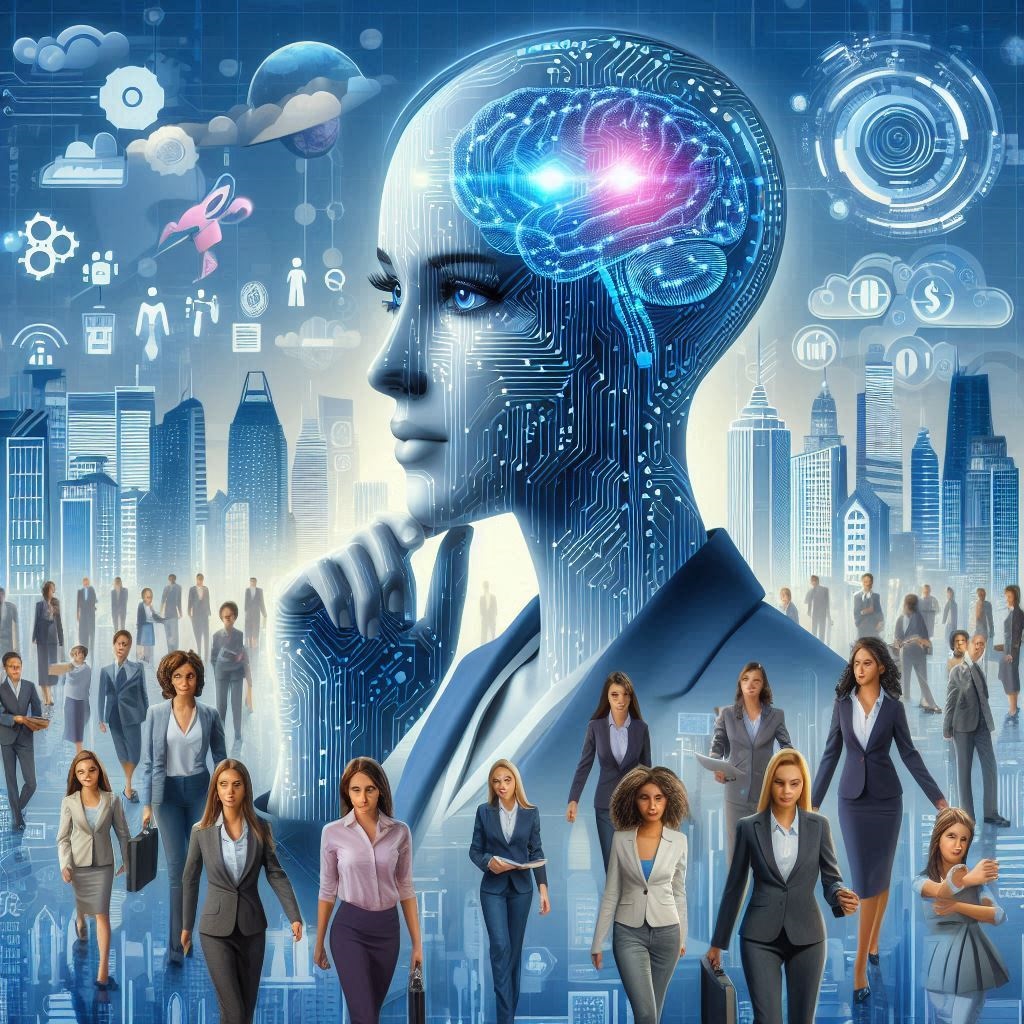The integration of Artificial Intelligence (AI), technology, and data science into public sector management is transforming the way governments operate and deliver services. These advanced technologies are not only optimizing the internal workings of government institutions but are also enabling more efficient, transparent, and effective services for citizens. In this article, we will explore how AI, technology, and data science are revolutionizing public administration, improving decision-making processes, and contributing to better governance.
The Role of AI in Public Sector Transformation
Artificial Intelligence (AI) has emerged as a game-changer in the management of the public sector. It offers innovative solutions to long-standing challenges faced by government institutions, such as inefficiency, outdated processes, and resource management. AI enables public authorities to handle large volumes of data with unparalleled speed and accuracy, leading to better decision-making and resource allocation.
AI-powered systems can automate repetitive administrative tasks, freeing up government employees to focus on more critical tasks that require human judgment. For example, AI algorithms can automate document processing, reduce the time spent on data entry, and improve overall workflow efficiency. This not only speeds up service delivery but also ensures consistency and accuracy in processing public services.
In addition, AI can be used for predictive analytics, allowing governments to anticipate issues before they arise. By analyzing historical data and patterns, AI can help predict public health crises, natural disasters, or economic downturns, enabling the government to take proactive measures. This data-driven approach allows governments to be more responsive and prepared for unforeseen challenges.
Data Science: Unlocking the Power of Information
Data science has become an essential tool in modern public sector management. By leveraging advanced analytical techniques, governments can extract actionable insights from vast amounts of data generated by various sources, such as citizen interactions, social media, public services, and economic indicators. These insights can be used to optimize public policies, improve service delivery, and create more responsive governance structures.
One of the key applications of data science in the public sector is the optimization of resource allocation. By analyzing trends and patterns, governments can determine the areas that require the most attention and allocate resources accordingly. For instance, data science can help identify regions with a high demand for healthcare services, enabling better distribution of medical resources, staff, and infrastructure.
Additionally, data science can improve public policy by providing governments with a deeper understanding of societal needs and behaviors. By analyzing data from various sectors such as healthcare, education, and transportation, data scientists can provide evidence-based recommendations for policy reforms that align with citizens’ needs and priorities. This enables more targeted and effective policy interventions, leading to improved public sector performance and social outcomes.
Technology: Enhancing Public Sector Efficiency
The integration of modern technology into public sector operations is essential for improving efficiency and promoting innovation. Technologies like cloud computing, blockchain, and IoT (Internet of Things) have streamlined government operations, reducing costs and improving accessibility for citizens.
Cloud computing allows governments to store and manage vast amounts of data securely and efficiently. Cloud services enable public sector institutions to access data and applications remotely, facilitating collaboration between departments and improving communication. Furthermore, cloud computing offers scalability, allowing governments to expand their technological infrastructure as needed without the burden of maintaining expensive physical hardware.
Blockchain technology has the potential to revolutionize public sector transparency and security. By creating decentralized, tamper-proof records, blockchain can improve the integrity of public records, making it easier to track the flow of resources, verify contracts, and prevent corruption. For instance, blockchain can be used in voting systems, ensuring secure, transparent elections where the integrity of each vote is guaranteed.
The Internet of Things (IoT) connects physical devices to the internet, allowing for real-time data collection and analysis. In the public sector, IoT applications can enhance urban management, transportation, and public safety. For example, smart traffic lights and sensors can optimize traffic flow, reducing congestion and improving urban mobility. Similarly, IoT sensors can monitor environmental conditions such as air quality and water levels, allowing governments to respond quickly to potential hazards.
The Impact on Public Sector Decision-Making
The application of AI, data science, and technology in the public sector significantly enhances decision-making processes. These tools allow for data-driven decision-making, where government officials rely on accurate and real-time data to make informed choices that affect public welfare.
With AI and predictive analytics, governments can use historical data to forecast future events and trends. This allows them to make more proactive and preventative decisions, rather than reactive ones. For example, predictive models can help governments anticipate the demand for public services such as healthcare, transportation, or education, ensuring that resources are allocated efficiently and effectively.
Data visualization tools also play a crucial role in decision-making. By presenting complex data in an easily understandable format, these tools enable government officials to quickly identify trends, assess performance, and make data-backed decisions. For example, interactive dashboards can provide real-time updates on public health, crime rates, and economic indicators, giving policymakers the information they need to take immediate action.
Improving Citizen Engagement and Trust
One of the primary goals of using AI, technology, and data science in the public sector is to improve citizen engagement and build trust between governments and the people they serve. By using these tools to enhance service delivery and responsiveness, governments can create a more transparent and accountable relationship with citizens.
AI-powered chatbots and virtual assistants can provide citizens with quick and accurate information about public services, such as tax filings, healthcare services, or permits. These systems can be accessed 24/7, offering convenience and improving the overall user experience.
Furthermore, the use of data science can enable governments to personalize services based on individual needs and preferences. By analyzing citizen data, governments can tailor programs and policies to address the specific needs of different communities, improving satisfaction and overall service quality.
Technology also facilitates digital platforms where citizens can provide feedback, report issues, or participate in decision-making processes. This encourages greater public involvement and strengthens the democratic process.
Overcoming Challenges and Ensuring Ethical Use of Technology
Despite the significant benefits, the use of AI, technology, and data science in the public sector comes with its challenges. One of the primary concerns is ensuring data privacy and security. With the increasing amount of personal data being collected and analyzed, governments must implement stringent data protection measures to prevent misuse or unauthorized access.
Moreover, there is a risk of algorithmic bias in AI systems. If AI models are trained on biased data, they may perpetuate existing inequalities in public services. Governments must ensure that AI systems are fair, transparent, and accountable, with regular audits to detect and address biases.
There is a need for continuous upskilling of public sector employees to ensure they can effectively leverage these technologies. Governments must invest in training programs that help employees develop the skills needed to use AI, data science, and other technologies in their daily work.
The Future of Public Sector Management
The integration of AI, technology, and data science in the public sector represents a major step forward in improving governance and service delivery. By enabling more efficient operations, data-driven decision-making, and better citizen engagement, these technologies are reshaping the way governments interact with their citizens. However, to realize their full potential, governments must address challenges such as data privacy, bias, and the digital divide. With the right policies and infrastructure, AI, technology, and data science will continue to drive innovation and improve public sector management, paving the way for a more transparent, efficient, and responsive government.



